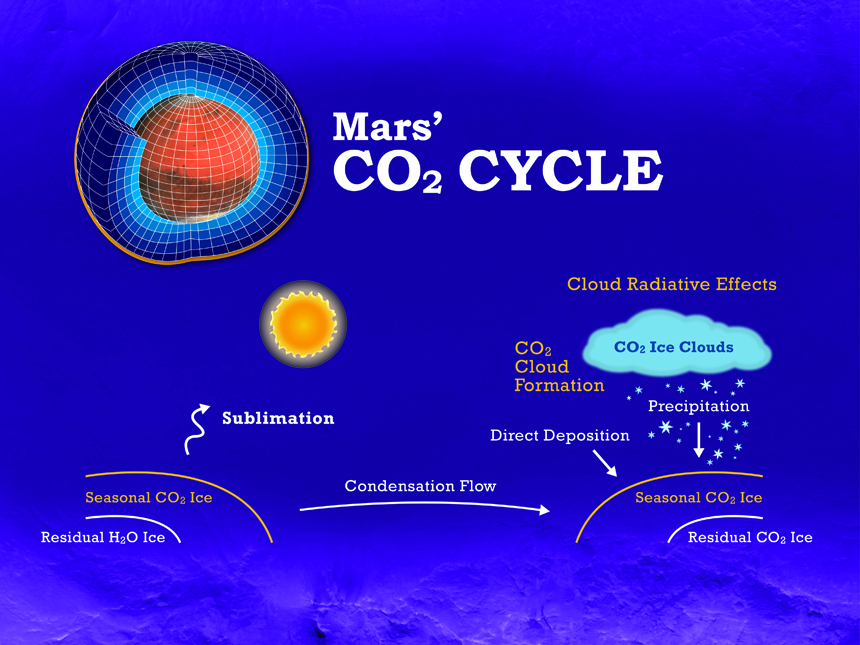Carbon Dioxide Cycle
During winter, the temperatures in the polar regions of Mars are cold enough for the CO2 in the atmosphere to condense into ice on the surface. The CO2 then sublimates off the ice cap in the spring and summer, returning to the atmosphere. In the northern hemisphere, the CO2 ice cap completely vanishes in the summer, uncovering a large perennial H2O ice cap. During the southern hemisphere summer, a small CO2 covered ice cap survives; this perennial ice cap is offset from the south pole. This cycling of CO2 into and out of ice on the surface changes the atmospheric mass by tens of percent over the course of a Martian year. The Viking Landers measured a highly repeatable annual cycle of surface pressure, which suggests that the CO2 cycle has very little interannual variability. This is intriguing and not yet well understood given the highly variable nature of the dust cycle and the reasonable assumption that interactions between dust and CO2 frost affect the CO2 cycle. Understanding the CO2 seasonal cycle and how it is coupled to both the dust and water cycles is likely key to understanding its repeatable nature.
We use the NASA Ames Mars GCM to address several questions relating to the CO2 cycle and how it affects the climate of Mars. Click the links below to learn about our current CO2 cycle projects.























